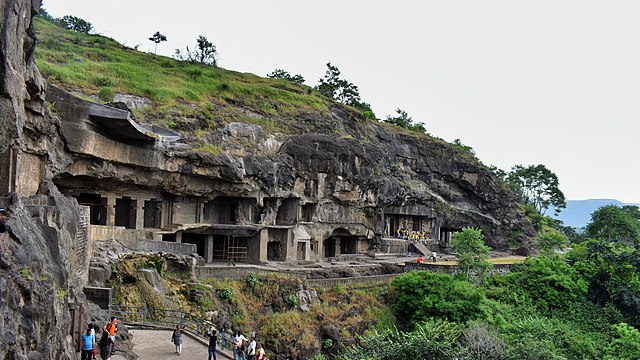Your love for Indian history and monuments would be incomplete unless you visit the Ajanta and Ellora cave monuments. These caves have long been revered as the epitome of ancient Indian art and culture. They not only symbolise a beautiful art form, but they also needed a great deal of hard work. The true ambiance of the caves can never be captured or described by any means known thus far.
To truly appreciate the beauty and grandeur of these caves, a firsthand visit is required. So, get set to fulfil your long-awaited dream of being among the caves that had astounded visitors from all over the world. Ajanta and Ellora cave monuments were accorded the status of UNESCO World Heritage Site in 1983. Ellora cave monuments fall in the Marathawada region in the state of Maharastra.

Over the years Ellora has not only attracted the attention of only art lovers and historians, but also writers and filmmakers. It may be noted here that, the Ellora caves inspired the renowned Indian filmmaker and writer Satyajit Ray to pen the crime thriller titled, ‘Kailashey Kelenkary’ (The Scandal in Kailash) in which detective Feluda travels to the Ellora caves in the novel to investigate a smuggling racket involving the unlawful trading of historical artefacts from Indian temples, notably the largest cave at Ellora, the Kailasa Temple. Sandip Ray, Satyajit’s son, adapted the novel into a film of the same name in 2007.
You can do the tours of both Ajanta and Ellora in a single day, but it would be hard. These two places are at least 100 kms apart and they are potentially so touristy that you hardly do justice if you make a hurried visit. I suggest that you keep a day for each of these monuments. However, you can club nearby places during your visit to either Ajanta or Ellora. During my Ellora visit, I also went to the Grishneswar shrine which is one of the 12 Jyotirlingas and just 2 kilometers from the Ellora caves.
Ellora can be conveniently visited from any part of the country, but visitors mostly prefer to come from Mumbai, Pune or Shirdi. Aurangabad is the nearest city at a distance of 30 kilometers.This blogpost is about my visit to Ellora caves from Shirdi.
Post Contents
The Ellora Cave Monuments Complex
This stunning rock-cut temple caves exhibit artwork and monuments from the periods of Jainism, Buddhism, and Hinduism from 600 to 1000 C.E. Among these monastic cave temples’ Kailasha Temple, located in cave 16, is an example of monolithic single rock excavation art. The temple also houses the mythology, goddesses, and gods of the Hindu epics, as well as the religious cults of Shaktism and Vaishnavism.
The Ellora cave complex comprises over 100 caves, all excavated from the basalt cliffs in the Charanandri Hills in the Western Ghats, only 34 of which are available to the visitors The cave complex includes five Jain caves, seventeen Hindu caves, and twelve Buddhist caves in this group. These caves reflect the religious beliefs of the time.
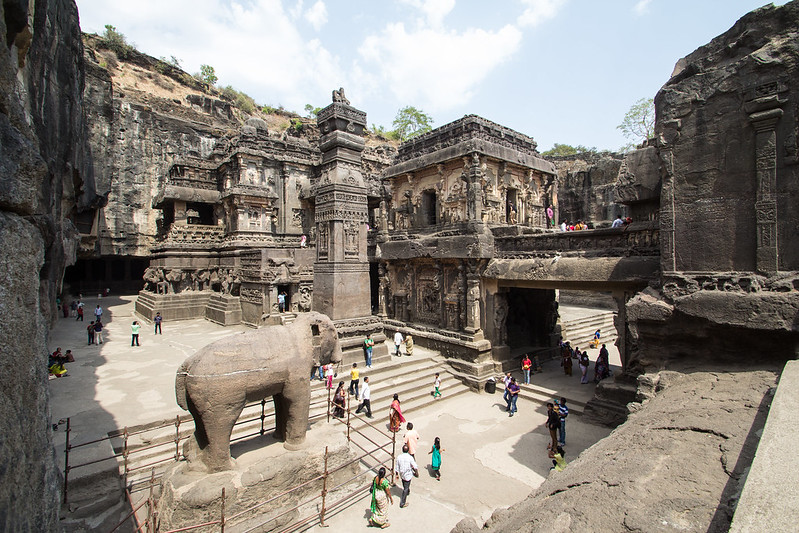
The Rashtrakuta Dynasty built the Buddhist and the Hindu caves, whereas, the Yadav dynasty built the Jain caves. These caves served manifold purposes like an abode for praying, resting place for the pilgrims and monasteries for the monks.
You need a good amount of time to explore the entire cave complex which runs for about 2 kilometers. If you don’t have that kind of time, then you must visit cave no-10,11, 12, 15 and 16.
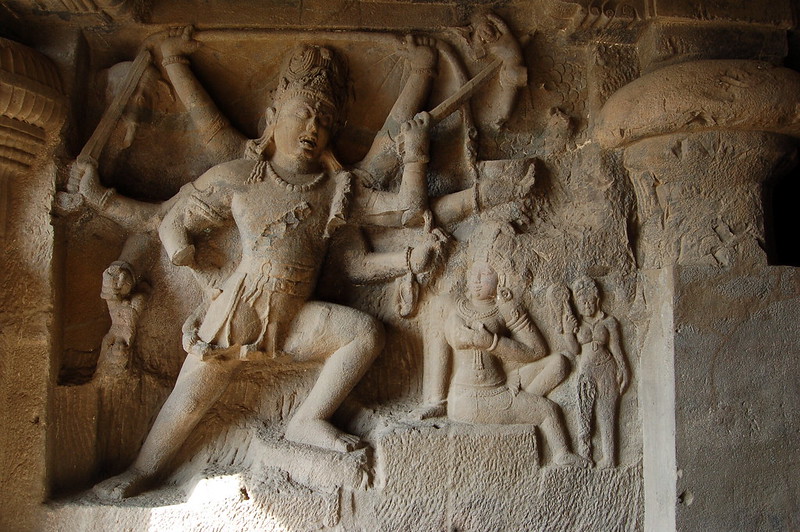
Must Read: Bodh Gaya travel: A self-enlighening journey into the land of Buddha
The Buddhist Cave monuments (Caves-1-12)
These caves lie on the southern side and were built between 630 and 700 CE, or 600 and 730 CE. The Buddhist caves were supposed to be the first constructions built between the fifth and eighth centuries, with caves 1–5 in the first phase (400–600) and 6–12 in the later phase (650–750). However, historians now believe that Hindu caves were built before the Buddhist caves. Cave 6 is the first Buddhist cave, followed by Caves 5, 2, 3, 1 (right wing), 4, 7, 8, 10, and 9, with Caves 11 and 12, Tin Tal (three stories), respectively, being the last ones..
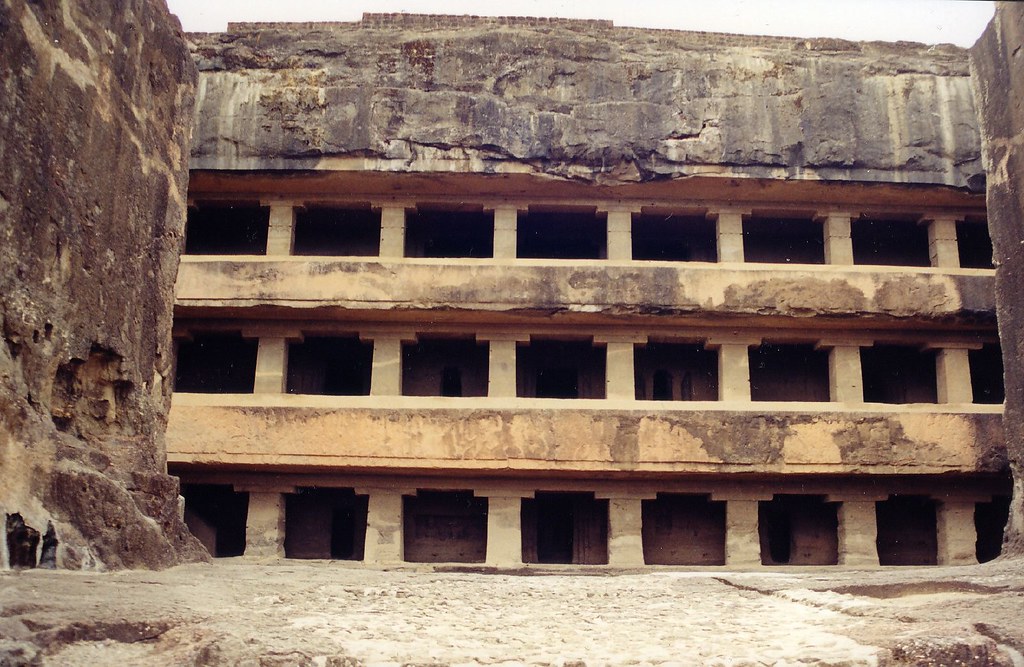
The 12 Buddhist Caves comprise of viharas or monasteries. Several monasteries in these caves have shrines with paintings and sculptures of Buddha, Bodhisattva, and Saints.
The most well-known Buddhist cave is Chaitya hall Cave 10, also known as the Viswakarma Cave or Carpenter’s Cave. This cave has a cathedral-like stupa hall known as chaityas. The cave’s centrepiece is a 15-foot-tall statue of Buddha. Chaitya features a pillared verandah (gallery) with two shrines and a lone cell.
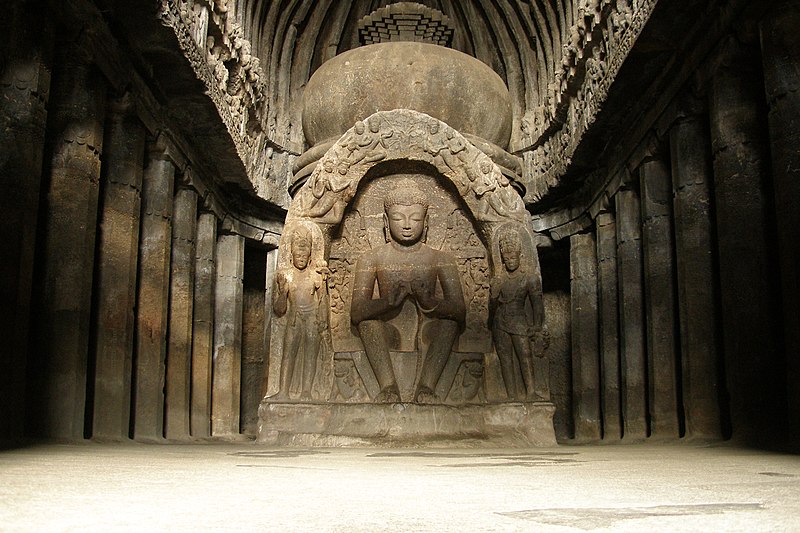
Caves 11 and 12 are three-story Mahayana monastery caves featuring Vajrayana Buddhist statues, mandalas carved into the walls, and various goddesses and Bodhisattva-related artwork. These are persuasive arguments suggesting Vajrayana and Tantra Buddhist concepts were largely prevalent in South Asia by the 8th century CE.
You may also like: Dancing Shiva of Chidambaram: Where science meets spirituality
The Hindu Cave Monuments (Caves-13-29)
The Hindu caves were built in two stages during the Kalachuris period, from the mid-6th century until the end of the 8th century. Early in the sixth century, nine cave temples were excavated, followed by another four caves (caves 17–20). Work began on Caves 28, 27, and 19, then Caves 29 and 21, which were chiseled concurrently with Caves 20 and 26. Caves 17 and 28 were the latest to be started.
Subsequently caves, 14, 15, and 16, were built during the Rashtrakuta dynasty, with some dating from the 8th to 10th century. Work began in Caves 14 and 15, with Cave 16, the world’s tallest monolith, being the last of three to be built. With the help of King Krishna 1, these caves were built in the 8th century. In terms of scale, creative vision and skill of execution, these caves are in a league of their own.
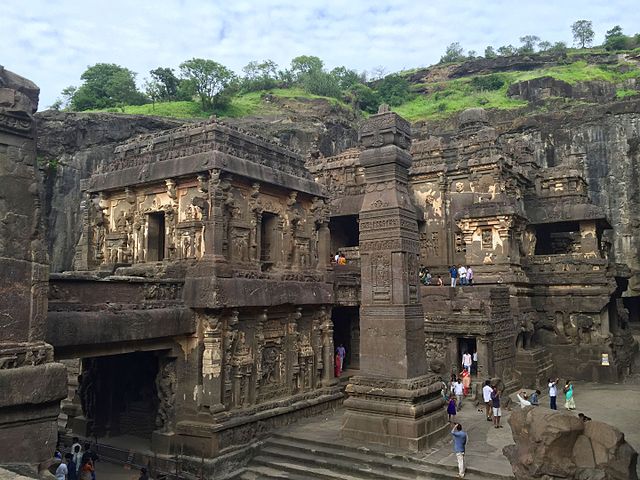
Kailash Temple (Cave-16): The pick of the Hindu caves is unquestionably cave-16, also known as the Kailasha Temple. Dedicated to Lord Shiva, the temple Cave 16 is a perfect example of structural innovation, and it represents the epitome of rock-cut architecture in India, with intricate craftsmanship and striking proportions.
The temple is adorned with some of India’s most daring and beautiful sculptural works. The sculpture showing Ravana attempting to lift Mount Kailasa, Siva’s home, is especially noteworthy. Beautiful artworks from various periods have been preserved on the ceilings of this temple’s entrance mandapa (pillared hall).
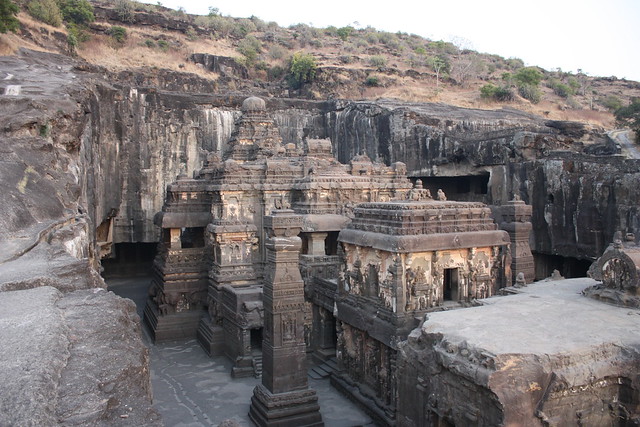
Also read: A Day Trip to Pichavaram Mangrove Forests
On a portico in front of the temple, an image of Shiva’s mount Nandi (the sacred bull) stands. Rows of carvings illustrating the Mahabharata, on the north side, and the Ramayana, on the south side, adorn two of the main temple’s walls.
The Kailasha temple is considered as a significant example of temple architecture from 1st millennium Indian history, and Carmel Berkson referred to it as “a wonder’ among rock-cut monuments.
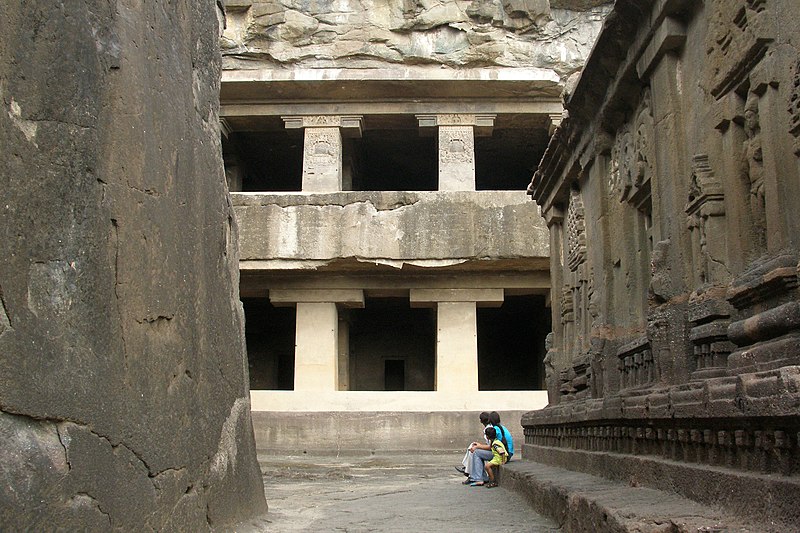
The Dashavatara (Cave 15): The Dashavatara temple, or Cave 15, is another significant monument that you must not miss. The two-storey temple is one of the finest at Ellora. The Hindu temple in Cave 15 is set in an open court with a free-standing monolithic mandapa in the centre and a two-story excavated temple in the back.
On the upper floor, large sculptural panels between the wall columns depict a number of themes, including the 10 incarnations of Vishnu or Dashavatara. On the back wall of the entrance mandapa is an inscription of Dantidurga, the founder of Rastrakuta empire which is crucial in evaluating the date of the temple. The best relief in this cave depicts Hiranyakashipu’s death, with Vishnu in man-lion (Narasimha) form emerging from a pillar to place his fatal hand on his shoulder.
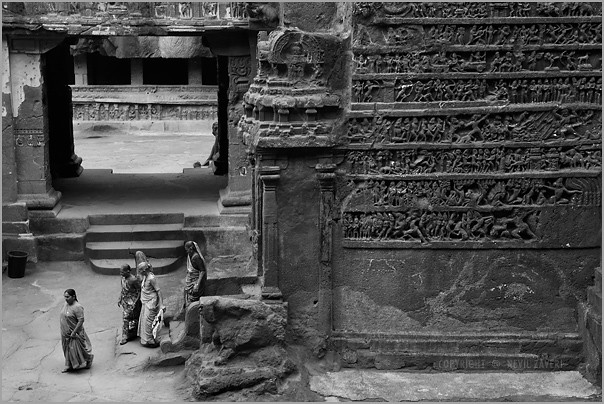
Interesting Read: Sabarmati Ashram: Where simplicity is the mantra
Other notables in Cave 15 include the Gangadhara, Shiva and Parvati’s marriage, Tripurantika of Shakti tradition, Markendeya, Garuda, phases of life, Nandi in mandapa, dancing Shiva, Andhakasura, Govardhanadhari, Gajendravarada, and others.
On the upper floor, large sculptural panels between the wall columns depict a number of themes, including the 10 incarnations of Vishnu or Dashavatara. On the back wall of the entrance mandapa is an inscription of Dantidurga, the founder of Rastrakuta empire which is crucial in evaluating the date of the temple. The best relief in this cave depicts Hiranyakashipu’s death, with Vishnu in man-lion (Narasimha) form emerging from a pillar to place his fatal hand on his shoulder.
Other notables in Cave 15 include the Gangadhara, Shiva and Parvati’s marriage, Tripurantika of Shakti tradition, Markendeya, Garuda, phases of life, Nandi in mandapa, dancing Shiva, Andhakasura, Govardhanadhari, Gajendravarada, and others.
Other Hindu Cave Monuments: Cave 21, also known as Rameshwar Temple, is another early excavation that has been attributed to the Kalachuri dynasty. The cave was finished before the ascension of the Rashtrakuta dynasty, which went on to expand the caves at Ellora.
Although the cave has works that are similar to those seen in other Ellora caves, it also contains a number of unique pieces, such as those representing the goddess Parvati’s pursuit of Shiva. Other caves feature carvings of Parvati and Shiva at leisure, Parvati’s wedding to Shiva, Shiva dancing, and Kartikeya (Skanda). The cave is symmetrically planned out according to the mandapa square principle, with embedded geometric patterns that recur throughout the cave.
Other significant Hindu caves include Ravan ki Khai (Cave 14) and Nilkantha (Cave 22), both of which have numerous sculptures, Cave 25 in particular featuring a carving of Surya (sun) on its roof.
The Jain Cave Monuments (Cave-30-34)
As you explore the Ellora caves complex beginning with the Buddhist ones, you reach the five Jain caves of the Digambara sect, located at the northern end of Ellora, which were sculpted in the 9th and early 10th century. These caves are smaller than the Buddhist and Hindu caves, but they nevertheless have intricate decorations.
They were created about the same time as the later-era Hindu caves and share architectural and devotional themes including a pillared veranda, symmetric mandapa, and puja (worship). Unlike Hindu temples, however, emphasis is put on the representation of the twenty-four Jinas (spiritual conquerors who have gained liberation from the endless cycle of rebirths).
Must Read: Top places to visit in Dwarka and things to do
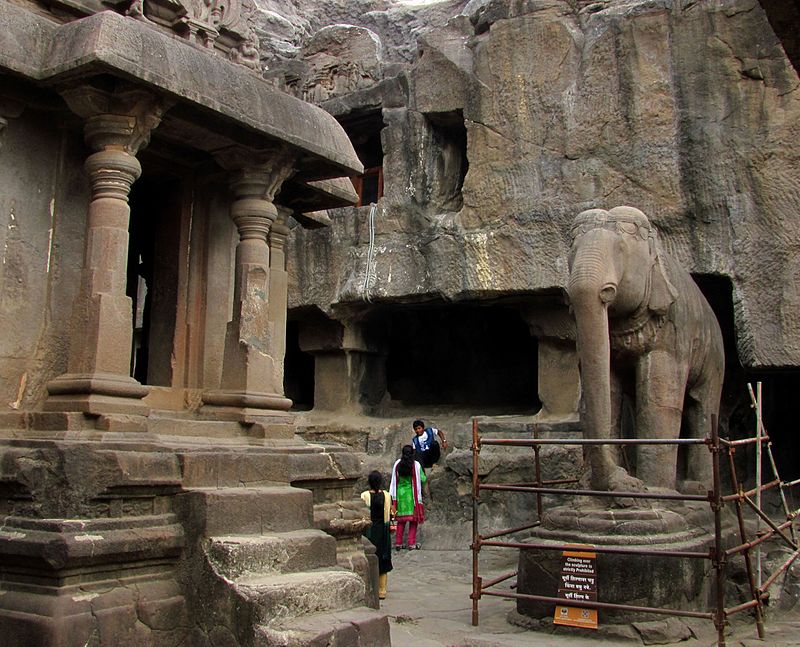
The Chotta Kailasha, or Little Kailasha (Cave-30), gets its name from the carvings’ similarity to those in the Kailasha temple. This temple was most likely built in the early 9th century, concurrent with the construction of the bottom level of the Indra Sabha, some decades after the Kailasha Temple was built.
Cave 31, is an incomplete small shrine which hasfour pillars and a number of carvings.. Carvings of Parshvanatha, guarded by yaksha Dharanendra with his seven hoods, and Gommateshvara were carved into the left and right walls of the hall, respectively, while an idol of Vardhamana Mahavir Swami housed within the shrine. The idol is seated in padmasan on a lion-throne, with a chakra visible in the centre panel of the throne.
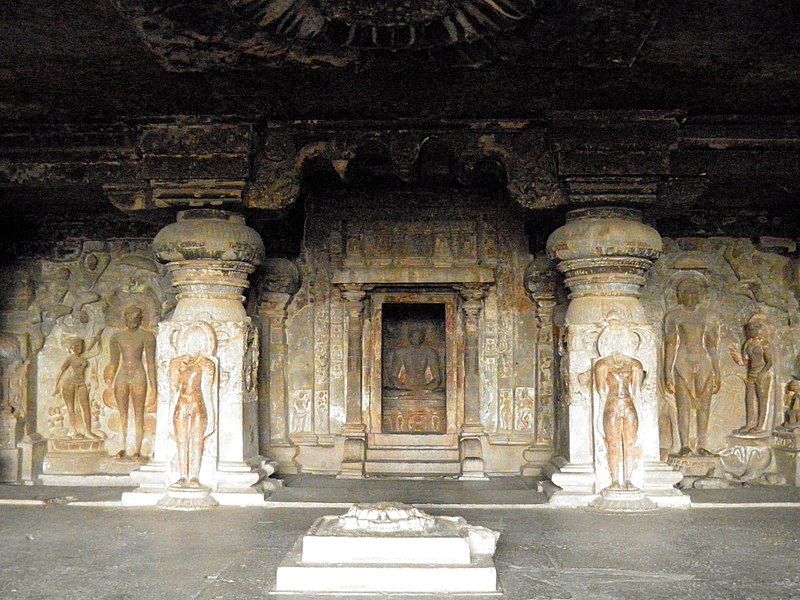
Cave 32, also known as Indra Sabha was, excavated in the 9th century, is a two-storey cave with a monolithic shrine in its court. The temple, like many caves in Ellora, is adorned with sculptures, such as those of the lotus flower on the roof. A figure of Ambika, the yakshini of Neminath, seated on her lion under a mango tree laden with fruit, may be found on the upper level of the temple, dug near the back of the court. The shrine’s main focus is Sarvatobhadra, where four Jain Tirthankaras – Rshibha (1st), Neminatha (22nd), Parsvanatha (23rd), and Mahavira (24th) – are aligned to the cardinal directions, forming a site of prayer for devotees.
According to the inscriptions on the pillars, the Jagannatha Sabha (Cave 33) is the second-largest Jain cave at Ellora and dates to the 9th century. It is a two-storey cave cut from a single rock, with twelve giant pillars and elephant heads projecting towards a porch. The hall is flanked by two large square pillars in the front, four in the middle, and a pillared interior square main hall.
Cave 34 depicts a huge seated Parshvanatha Jina with four camara attendants, two of whom hold fly-whisks and appear from the back of the Jina’s throne. As with many other Jain excavations, a large pair of yaksa-yaksi is found in this cave near the Jina. There are several inscriptions in the cave that have not been deciphered as yet but are likely to have been executed between 800 and 850 CE.
Also Read: Visiting the land of Ramana Maharshi and Arunachaleswar
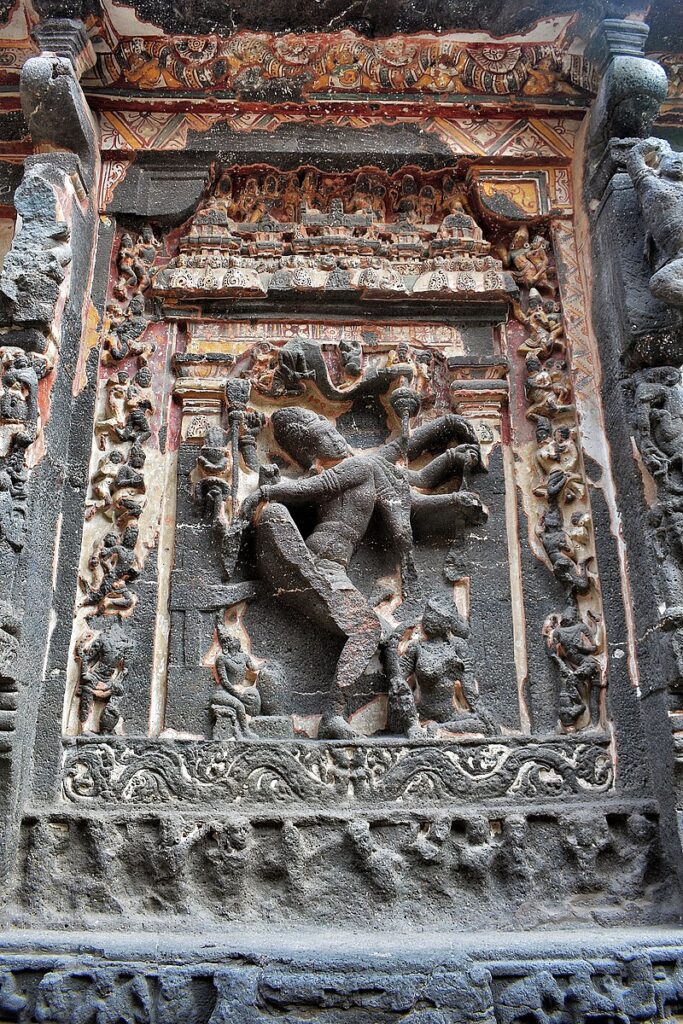
Abhideo21 –CC BY-SA 4.0
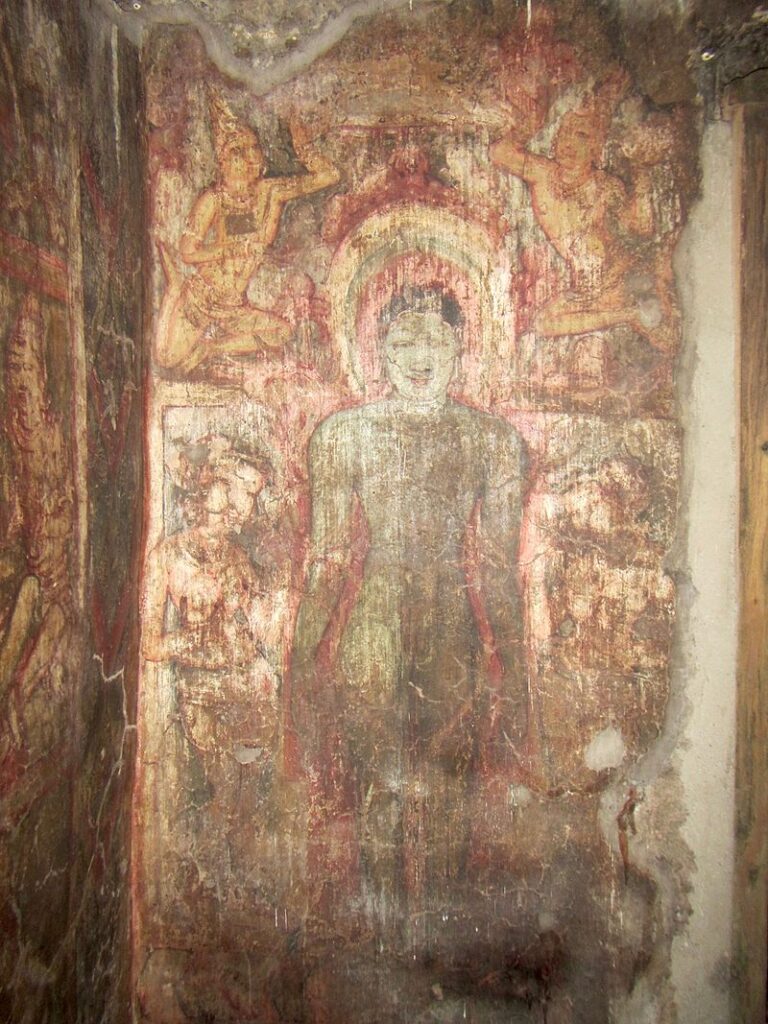
Ellora cave inscriptions and painted carvings
Several inscriptions at Ellora dated from the 6th century onwards, the best known of which is an inscription by Rashtrakuta Dantidurga (c. 753–757 CE) on the back wall of Cave 15’s front mandapa saying that he had performed prayers at that temple. Jagannatha Sabha, Jain cave 33, has three inscriptions with the names of monks and donors, while a Parshvanath temple atop the hill contains a 1247 CE inscription with the name of a donor from Vardhanapura.
The Great Kailasa temple (Cave 16) is ascribed to Krishna I (c. 757–783 CE), Dantidurga’s successor and uncle. According to a copper plate inscription discovered near Baroda, Gujarat, Krishnaraja built a huge edifice on a hill in Elapura (Ellora).
Ellora’s carvings were once heavily painted. The rock was covered with a lime plaster that had been painted. In some places, the plaster and paint have survived the test of time.
Interesting read: Gingee fort: 5 amazing facts that make it a must visit
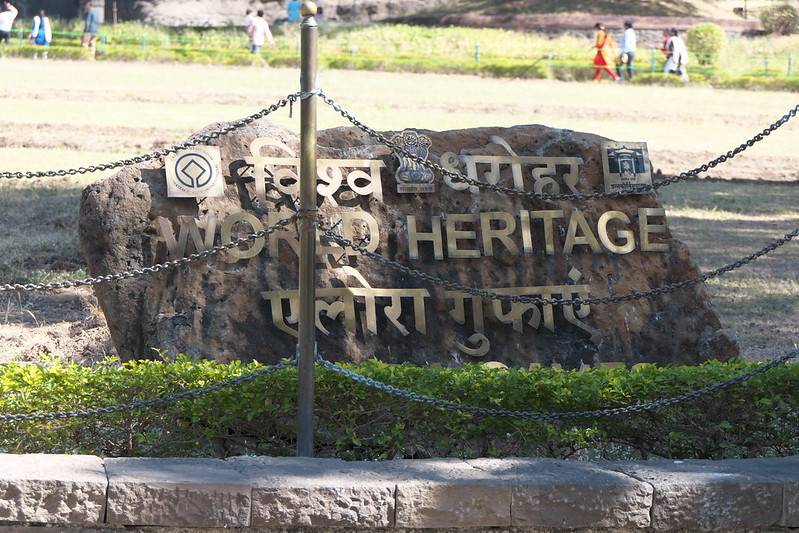
How to reach Ellora caves
By Air
The nearest airport to Ellora is Aurangabad’s Chikalthana Airport, which connects to other major cities in India. Regular flights to Aurangabad are available from Jaipur, Mumbai, Pune, Delhi, and Udaipur, and from there, one may take the bus or taxi to the Ellora caves. As such, getting to Ellora is not an issue.
By Train
While Aurangabad (29 kms) is the nearest railway station, Jalgaon is another major railway station, is barely 59 kilometres away from Ellora. Trains to major cities across the country can be found at these railway stations.
By Road
The Maharashtra state government operates bus services to Ellora from many other important cities in the state as well as neighbouring ones. Mumbai (350km), Pune (260km), and Ahmednagar (136km) are readily connected by state-owned and private buses. You can also hire a taxi either from these places to reach Ellora. Traveling to Ellora is not an issue, and how to get there is not a major concern for the visitors.
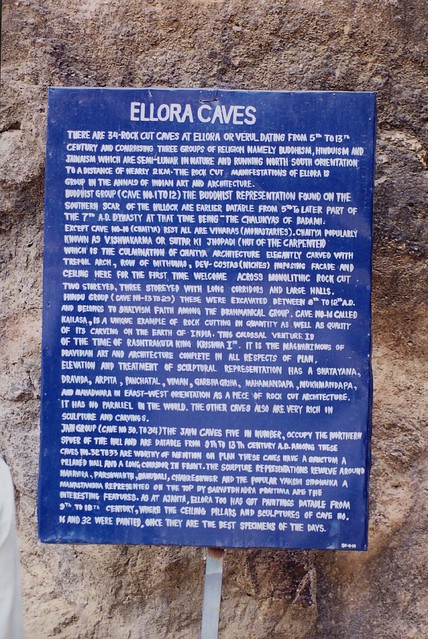
Odisha Special: Everything you need to know about Ranipur Jharial temples
Where to stay in Ellora
If you want, you can stay in Ellora itself which has quite few hotels. But most visitors prefer to stay in Aurangabad which is quite near and has better accommodation facilities. You can get accommodation according to your pocket. Many visitors who visit Ellora as a part of their tour to Shirdi opt to stay there. Though Shirdi is a relatively small town, it has excellent accommodation facilities. You can also stay in Jalgaon which is 59 kms away and take a day trip to Ellora.
When to Visit Ellora
Monsoon and winter are the best time to visit Ellora caves. Winter is cold with the temperature reporting as low as 10°C. The preferable months to visit this site during winters will be from November- February. Winter is regarded as the best season to visit Ellora.
During the Monsoon Season from July through September, the maximum temperature in the region hovers about 35°C which is ideal to visit Ellora. Summers are hot and humid and the temperature reaches upto 42 degree C. It will not be a good idea to visit Ellora in summer.
Odisha Special: Revisiting Bhima Bhoi and Mahima Dharma in Khaliapali
Travel Tips
- To avoid crowds and tour buses, try to be in the caves before 10 AM. Also try to avoid the weekends which are very crowded.
- Since you need a good amount of time to properly explore the cave monuments, you should take enough water and some dry food with you. You won’t find anything once you are in the cave complex.
- Climbing up the hill around Ellora’s Kailasa Temple offers a breathtaking view and perspective of its interior.
- Visiting Ellora caves is costly for foreigners. The ticket price is 600 rupees per foreign visitor. Indians pay only 40 rupees per ticket . Children younger than 15 years are free at the site.
- The Ellora caves are open daily, including national holidays, from sunrise to sunset (about 5:00 p.m.). The site remains closed on Wednesday.

